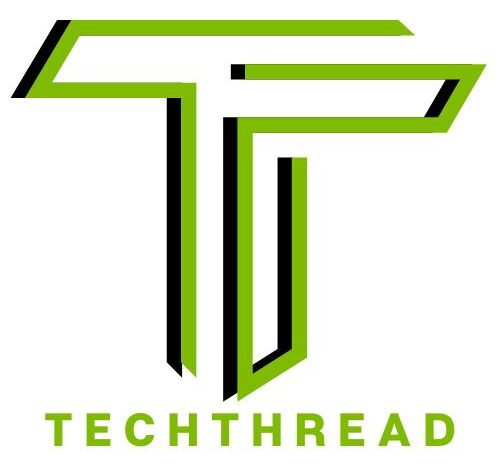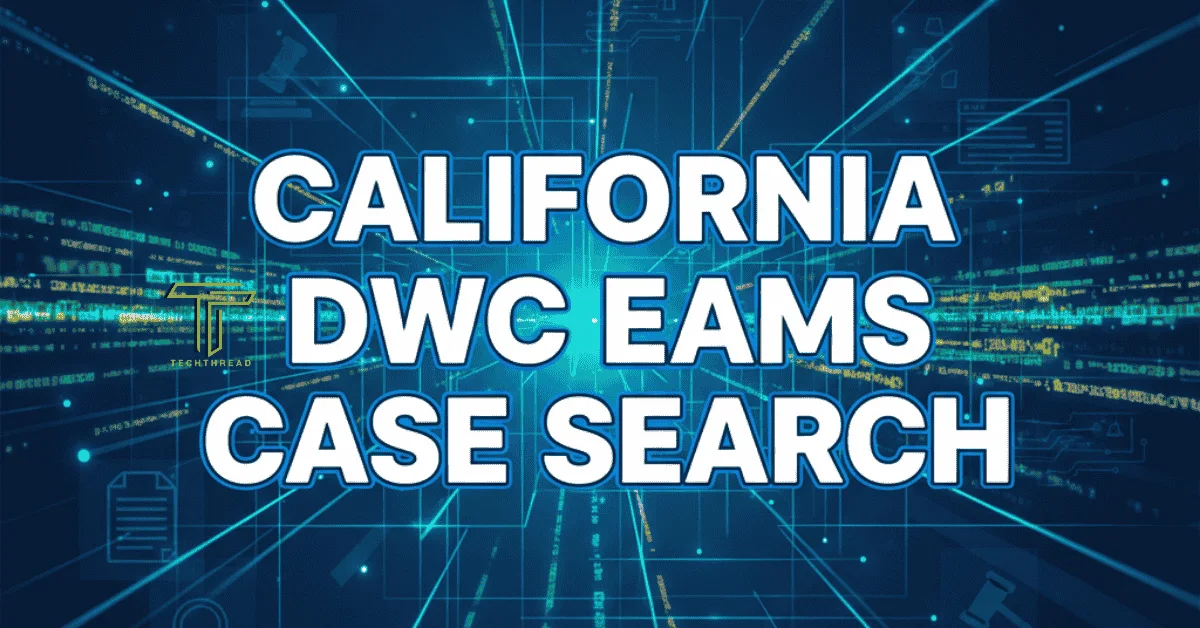EAMS Case Search Complete Guide For California Workers’ Case Information
Finding the details of a workers’ compensation case can feel like searching for a needle in a haystack. You might have a case number, the name of the injured worker, or a hearing date, but still end up stuck without clear results. This happens to attorneys, employers, and injured workers all the time. Most people don’t realize how small errors like entering a wrong prefix or missing a space can lead to a “no match” message.
The Electronic Adjudication Management System (EAMS), run by the California Division of Workers’ Compensation (DWC), was designed to make case information easier to find. But if you’ve ever tried using the public search portal, you know it’s not always simple. The system follows strict formats, limits what data you can view, and hides sensitive information to protect privacy.
In this blog, you’ll learn exactly how to use the EAMS case search tool the right way. We’ll break down what the system is, what information you can find, and how to avoid the common mistakes that keep people from locating their cases. You’ll also see practical tips, real examples, and insights from people who use this system every day attorneys, claims administrators, and workers navigating their own claims.
Table of Contents
What is EAMS Case?
The Electronic Adjudication Management System (EAMS) is California’s digital platform for handling workers’ compensation cases. It was launched by the Division of Workers’ Compensation (DWC) to replace the old paper-based system that caused delays and filing errors. Before EAMS, searching or updating case files meant digging through physical folders at Workers’ Compensation Appeals Board (WCAB) offices. That often led to long wait times and inconsistent access to records.
EAMS Case changed that by storing case details electronically and allowing the public to search basic information through the Public Information Search tool. This system helps attorneys, claims administrators, employers, and injured workers track their cases without needing to visit a district office in person.
Why EAMS Case Was Created
The main goal of EAMS Case was to make case management faster and more reliable. California processes thousands of workers’ compensation claims every year. Paper systems made it difficult to keep up with hearings, status updates, and judge assignments. By moving to an electronic platform, the DWC aimed to:
- Reduce delays in scheduling hearings
- Provide more consistent access to case information
- Limit filing errors and duplicate records
- Improve transparency for the public while protecting personal data
Who Uses EAMS Case
EAMS serves multiple groups:
- Injured workers who want to track the progress of their claim
- Employers checking on hearings or case updates related to their business
- Attorneys and representatives preparing for hearings and filings
- Judges and DWC staff managing and reviewing case files internally
While the public search gives only limited information, authorized users with login credentials (like judges or DWC staff) can access complete records, filings, and documents.
Case Number Formats: ADJ and Legacy
Every case in EAMS has a unique identifier. Newer cases follow the ADJ number format (e.g., ADJ1234567). Older cases may use legacy numbers, which include venue codes such as OAK (Oakland) or SDO (San Diego). To find older cases, you often need to convert these legacy numbers into the ADJ format before searching. This is one of the most common mistakes that causes search failures.
Key Features of the EAMS Case Lookup System
The EAMS public information search gives you access to basic details about California workers’ compensation cases. While the system doesn’t show private data, it provides enough information to help you track hearings, check case status, and confirm you’re looking at the right file.
Search by Different Criteria
One of the most useful features of the portal is its flexible search options. You can look up a case using:
- Case number (ADJ format or converted legacy number)
- Injured worker’s name
- Employer’s name
- Hearing date
Using multiple search fields improves accuracy, especially if you’re unsure about the exact case number. For example, if you only have the employer’s name and hearing date, the system can still return matching results.
Case Data Displayed
Once you find a match, the system shows several key details:
- ADJ case number
- Filing location (venue)
- Assigned judge
- Case status
- Upcoming hearing dates
- Events held within the past six months
These details help attorneys prepare for hearings, allow employers to track pending matters, and give injured workers a clear picture of where their claim stands.
Real-Time Updates and System Limits
EAMS data refreshes nightly, which means updates typically appear within 24 hours. However, it’s not a live system. Some events may take time to show, and older records beyond six months are not always displayed. If you’re looking for older filings or hearing events, you may need to contact a WCAB district office or use additional case tools.
Privacy Protections
The system follows Labor Code Section 138.7, which requires certain information to remain confidential. You won’t see personal addresses, Social Security Numbers, or medical details. This protects injured workers while still giving the public access to basic case data.
Legacy Number Conversion
For older cases, you can use the legacy number conversion tool. Legacy numbers usually contain a venue code like “OAK” or “SDO,” followed by a number. Converting these to the ADJ format ensures the system can locate the file. Many failed searches happen because people skip this step.
How to Use the Online EAMS Case Search Tool (Step-by-Step)
Using the online system may seem tricky at first, but once you know the steps, it’s straightforward. Following the right process helps you avoid errors and saves time.
Step 1 – Access the Official Portal
Start by visiting the Public Information Search page on the California Division of Workers’ Compensation (DWC) website. You don’t need a login for public searches. However, you must fill out a short form with your name, contact information, and the reason for your search. This step helps the DWC keep track of public use.
👉 Tip: Use a desktop or laptop if possible. Some mobile browsers may not display the portal correctly, which can cause search errors.
Step 2 – Choose Your Search Criteria
Next, pick the information you’ll use to search. You can enter:
- Case number in ADJ format (e.g., ADJ1234567)
- Legacy case number (then convert it)
- Injured worker’s name
- Employer’s name
- Hearing date
If you’re unsure of the case number, try combining the employer name with a date range. The more accurate your input, the better your chances of finding the correct file.
Step 3 – Submit the Search and Review Results
Click “Submit” to see the results. If your search matches a case, you’ll see a summary table with:
- Case number and venue
- Assigned judge
- Case status
- Hearing information and event history
If no results appear, check for spelling errors, missing prefixes, or spacing issues. Many “no match” messages happen because of small formatting mistakes.
👉 Example: Entering “ADJ123456” instead of “ADJ0123456” will return no results.
Step 4 – Use Legacy Number Conversion (If Needed)
If you have an older case, enter the legacy number into the conversion tool. For example, a number like “OAK123456” would be converted to the proper ADJ format. Without this step, the system won’t recognize the case.
Step 5 – Interpret and Save the Information
Once you find the correct case, review the details carefully. Check the venue to make sure it matches the expected location. Note hearing dates, judge assignments, and event history. It’s a good idea to print or save the page for your records.
Attorneys often print the event list to track upcoming hearings, while employers use it to confirm claim activity. Injured workers can use it to stay informed without relying only on mail notices.
Tips for Accurate EAMS Case Searching
Many people run into problems when using the online search tool. Most of these issues come from simple errors or skipped steps. Here are some proven ways to make your search more accurate and save time.
Use Complete and Correct Information
Always double-check the case number, spelling of the injured worker’s name, and employer name before searching. Even a single wrong letter or missing digit can cause the system to return no results. If you’re using a legacy case number, make sure you convert it to the ADJ format first.
👉 Example: “ADJ1234567” is not the same as “ADJ 1234567.” Extra spaces or missing zeros will block the search.
Combine Multiple Search Fields
If you don’t know the exact case number, use two or more fields together. For example:
- Injured worker’s name + employer name
- Employer name + hearing date
- Legacy number + worker name
This method filters out unrelated cases and increases the chance of getting the right match, especially in large venues with many claims.
Be Aware of System Limits
The EAMS public search is updated nightly, not in real time. Events older than six months may not appear, and certain case types (like DEU-related files) are excluded. If you can’t find what you need, it doesn’t always mean the case doesn’t exist. In some cases, you may need to contact the WCAB district office or check with a claims administrator for older records.
Watch Out for Technical Issues
The portal doesn’t always work well on mobile browsers or outdated web versions. Use a modern browser like Chrome or Firefox on a desktop for better results. If the page doesn’t load correctly, refresh it or clear your cache. Also, avoid staying idle for too long because the system may log you out.
Keep a Record of Your Searches
Once you find the right case, save the information. Attorneys often keep a simple spreadsheet with case numbers, venues, and hearing dates. Injured workers may print the result page for reference. This helps track changes over time without repeating the entire search each visit.
Benefits of Using the Online EAMS Case Information System
The online case lookup system has changed how people access workers’ compensation case data in California. Whether you’re an injured worker, an employer, or a legal professional, the system offers clear advantages that save time and reduce confusion.
Faster Access to Information
Before the Electronic Adjudication Management System (EAMS), getting case details meant calling a WCAB district office or visiting in person to review paper files. This could take days, especially in busy venues. Now, with a few clicks, you can view case status, hearing dates, and judge assignments from anywhere.
Attorneys use this feature daily to prepare for hearings, and employers rely on it to track active claims without waiting for mail notices.
Increased Transparency
The Public Information Search portal gives the public access to essential details, helping all parties stay informed. This reduces miscommunication between injured workers, employers, and claims administrators. Even though the system hides personal data under Labor Code Section 138.7, the available information is enough to follow the progress of a case with confidence.
Better Organization for Legal Teams
Law firms and claims administrators often manage dozens or even hundreds of cases. The online system helps them keep everything organized. They can:
- Check case numbers and venues quickly
- Monitor multiple hearing dates in one place
- Track event history to spot delays or changes
This makes internal coordination smoother and cuts down on unnecessary calls to district offices.
Empowering Injured Workers
For injured workers, the system provides a sense of control. You don’t have to wait for a letter or rely only on your attorney to know when your next hearing is. You can look it up yourself and stay updated. This is especially helpful if you’ve recently moved or had issues receiving mail.
Reducing Administrative Delays
The more people use the online system correctly, the fewer manual requests the DWC has to handle. This helps keep the overall process running more efficiently. Over time, this reduces backlogs at district offices and speeds up case handling across the board.
EAMS Case Login & Access Options
Not everyone uses the system the same way. Some users only need basic case details, while others—like judges or DWC staff—require full access to internal records. The table below breaks down the different access types and their purposes.
| Access Type | Requirements | Best For | Notes |
| Public Information Search | Basic contact form | Injured workers, employers, attorneys | No login needed. Limited data. Protects privacy under Labor Code Section 138.7. |
| EAMS Logon (Internal) | Authorized credentials issued by DWC | Judges, DWC staff | Full case files, filings, and documents. Not available to the public. |
| Legacy Number Tool | Legacy case details (e.g., OAK123456) | Anyone searching older cases | Converts venue-based legacy numbers into ADJ format for proper lookup. |
| Case File Review (In Person) | Appointment or walk-in at WCAB office | Attorneys, parties involved in case | Access to physical case files and older records not available online. |
When to Use Each Option
- Public Information Search works best if you need basic case status, upcoming hearings, or judge assignments.
- EAMS internal access is limited to staff and officials for legal and administrative work.
- Legacy conversion is essential if your case was filed before EAMS launched. Without conversion, searches will fail.
- In-person file review is still useful for older cases or files not fully digitized.
This breakdown helps you choose the right method depending on your role and what information you need.
FAQ – Common Questions About EAMS Case
How do I find my case if I don’t know the case number?
You can search by the injured worker’s name, employer name, or hearing date. Using two or more fields together increases accuracy. For example, searching by employer name and a specific date range often works well if you don’t have the case number.
Why can’t I find my case online?
There are a few reasons this happens:
- You may have entered the wrong ADJ number format or left out a zero.
- The case might use a legacy number that hasn’t been converted.
- Some case types, like DEU records, aren’t included in the public search.
- Events older than six months don’t always display.
If none of these solve the issue, contact the WCAB district office or your claims administrator to verify the details.
How do I convert a legacy case number?
Legacy numbers usually include a venue code (like OAK for Oakland or SDO for San Diego) followed by numbers. Use the legacy conversion tool to turn this into the ADJ format. Without this step, the system won’t return any results for older cases.
Is the data legally binding?
No. The information shown in the Public Information Search is for reference only. Official legal records are maintained by the Workers’ Compensation Appeals Board (WCAB). If you need certified records, you must make a formal request through the appropriate channels.
Who can I contact if I need more help?
If you still can’t find the information you need:
- Contact your claims administrator for updates
- Reach out to your attorney if you’re represented
- Call or visit the nearest WCAB district office for in-person help
They can provide support for complex searches, older files, or system-related issues.
Conclusion EAMS Case
Navigating California’s workers’ compensation system can feel overwhelming, especially when you’re trying to find specific case details. The EAMS public information search gives you the tools to locate case numbers, check hearing dates, and view judge assignments without waiting on phone calls or paper files. Once you understand how to use the portal correctly—choosing the right search criteria, converting legacy numbers, and avoiding formatting errors—the process becomes much easier.
Here are the key points to remember:
- Double-check your inputs. Small mistakes in case numbers or names can block your search.
- Use multiple fields. Combining search criteria improves accuracy.
- Know the system’s limits. Older events and certain case types may not appear online.
- Keep records. Save or print the results so you don’t have to repeat searches.
- Seek help when needed. WCAB district offices and claims administrators can assist if you hit a dead end.
By applying these steps, you can confidently find case information, stay on top of hearings, and reduce delays. Whether you’re an injured worker, an employer, or part of a legal team, using the system effectively saves time and keeps everyone informed.
If you’ve had unique experiences or helpful tricks when using the search tool, share them with others. The more people understand how to use this system correctly, the smoother the entire process becomes for everyone involved.
Also Read: 185.63.253.300: What You Need to Know About Invalid IP Addresses







